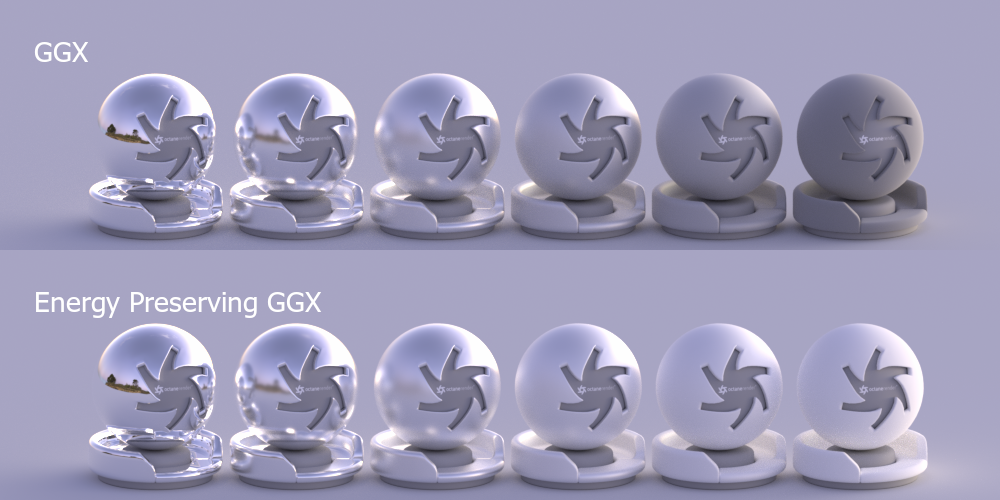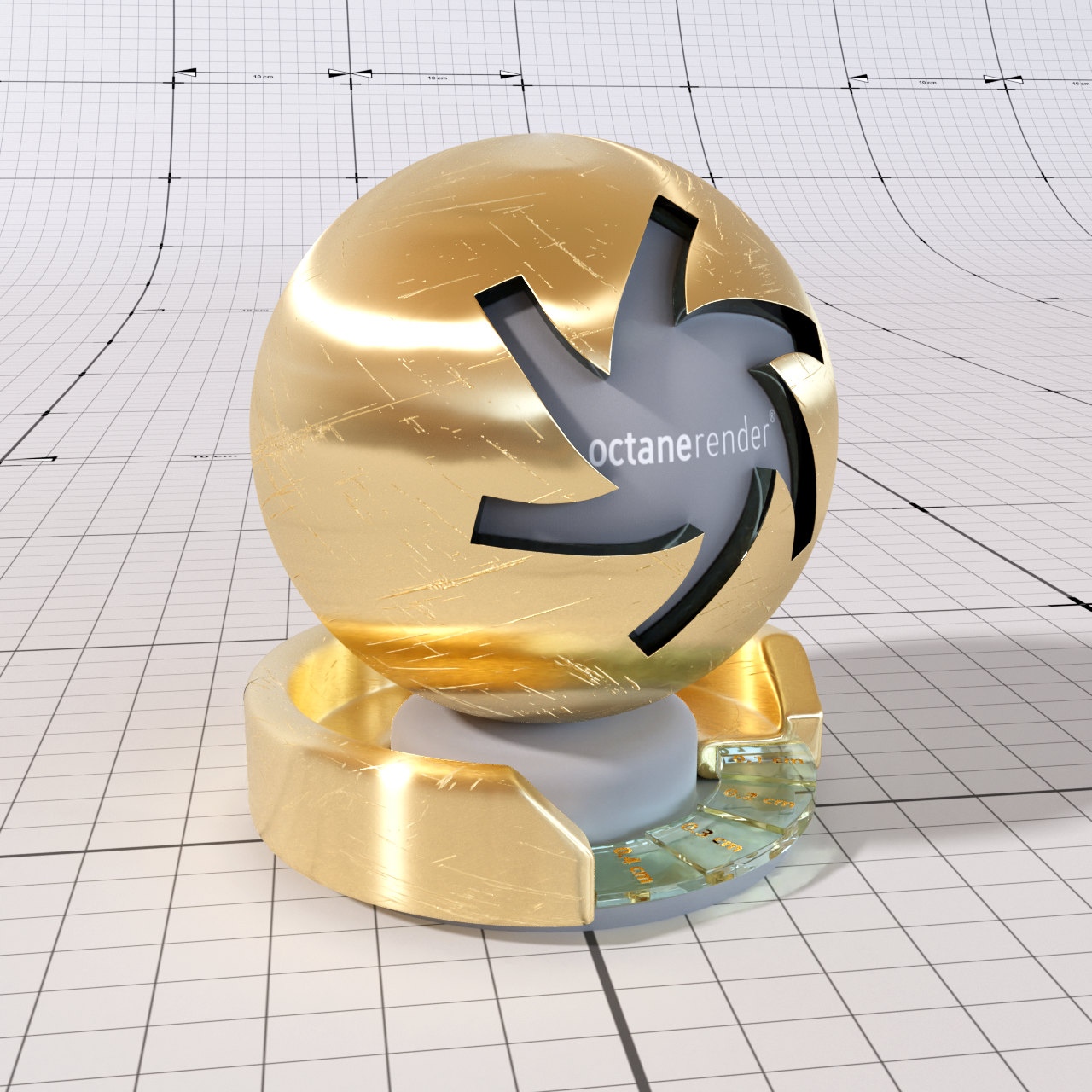Energy Conservation
There are six BRDF models to choose from in OctaneRender®. Four are physically correct: Beckmann, Ward, GGX and Energy Preserving GGX. The fifth is STD BRDF and the sixth is the original Octane BRDF, which does not consider microfacets or anisotropy, and only partially considers the fresnel effect. The original Octane BRDF is included for backwards compatibility for older scenes and for the ability to cheat a little, if you need it.
Energy Preserving GGX
The energy preserving GGX addresses the energy loss of the general microfacet model in materials with increasing roughness, which can introduce unexpected darkening to the material surface as roughness increases. The energy preserving GGX is aimed at overcoming this deficit and is available across different material nodes and material layer nodes in Octane involving the specular lobe, including:
Material nodes:
- Glossy material
- Metallic material
- Specular material
- Universal material
Material layer nodes:
- Metallic layer
- Specular layer
Below we show images comparing the specular materials of the old GGX model (top row) versus the energy preserving GGX model (bottom row) with increasing roughness from left to right:

Below we show images comparing the metallic materials of the old GGX model (top row) versus the energy preserving GGX model (bottom row) with increasing roughness from left to right:

STD BRDF
The STD BRDF provides an additional parameter, Spread, that gives you some control over the shape and slope of the falloff of the distribution/spread of reflected rays. The BRDF is available in glossy, specular, metallic and universal materials. Below you can see the material ball with the STD BRDF with roughness 0.2 and 4 different spread values and one version with a GGX BRDF for comparison:

BRDF Comparison
Let's compare all of the BRDF models on a simple sphere in the Live Viewer. Create a sphere object in Cinema 4D. Then create a Texture Environment object: Live Viewer > Objects > Texture Environment. Select the RGBSpectrum in Texture Environment settings and make the color white (1.0, 1.0, 1.0). Then create an Octane Glossy Material. Change the following in the material settings as follows:
Diffuse: Full Black (0, 0, 0)
Specular: White Color (1.0, 1.0, 1.0)
Roughness: 0.5
Index: 1 (To disable Fresnel)
Finally, go to the Settings/Kernel and select Pathtracing. Now run Live Viewer. You will not be able to see anything but white, even though the sphere is there. Why? We see a white image because the original Octane BRDF equalizes the reflected light energy and the incoming light energy — it's always %100.
Now change the BRDF to "Beckmann". You will see that Sphere is a little more defined against the environment, as the reflected light energy from the sphere is less than the incoming light's energy. The illustration below shows all of the available BRDFs in the same context.

Microfacets in Octane (Roughness)
Octane mimics the natural roughness of a surface while redefining the surface at the micro geometry level according to the "microfacet" functions in five of the BRDF choices, "Beckmann", "GGX" and "Energy Preserving GFGX", "STD" and "Ward" BRDFs. Unlike the original Octane BRDF, these five models allow you to create features such as "Fresnel Effect" and "Anisotropic Roughness."
Which BRDF should you choose? The biggest difference between these five microfacet models is the Specular Lobe. These specular lobes are defined by the microfacet NDF (Normal Distribution Function). NDF describes the distribution of microfacets for the surface and unique to each BRDF model. Also, this function is most responsible for the size and shape of the specular highlight. In the images below, you see the Specular Lobes of all five models with a roughness value of 0.2. GGX produces more specular tail than other models. This is because the angle of the Microfacet normal differs from the Surface Normal, so the GGX does not fall below a certain value.
You can get more detailed information from the below link:
https://www.cs.cornell.edu/~srm/publications/EGSR07-btdf.pdf.

Anisotropy in Octane
Some surfaces reflect light in a non-circular or spherical manner, but instead distorts the reflected light in a manner driven by the physical components of the surface as well as its surface smoothness and grain direction. This characteristic is known as "Anisotropy". You can get complex metallic surfaces thanks to this feature as well as polished metal, human hair, fur and wood. The look of the reflection will vary depending upon which BRDF model that you choose. The example below uses the Metallic material with the Energy Preserving GGX BRDF model, with Roughness at 0.5 and the Anisotropy value at -0.74248. Additionally, rotation direction can be control by textures as desired.
